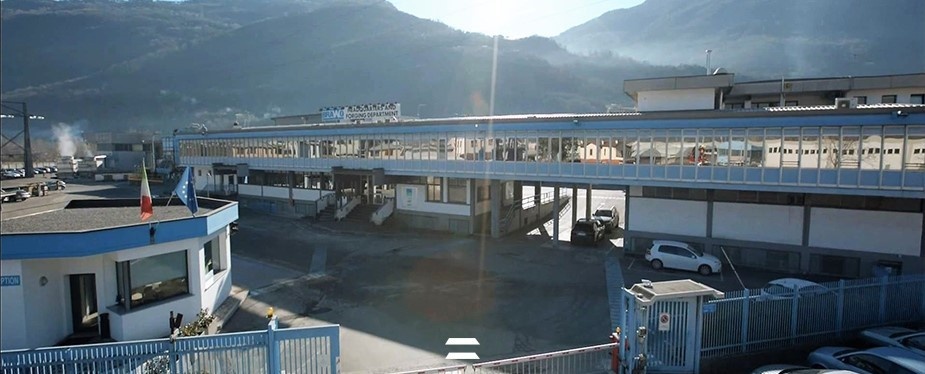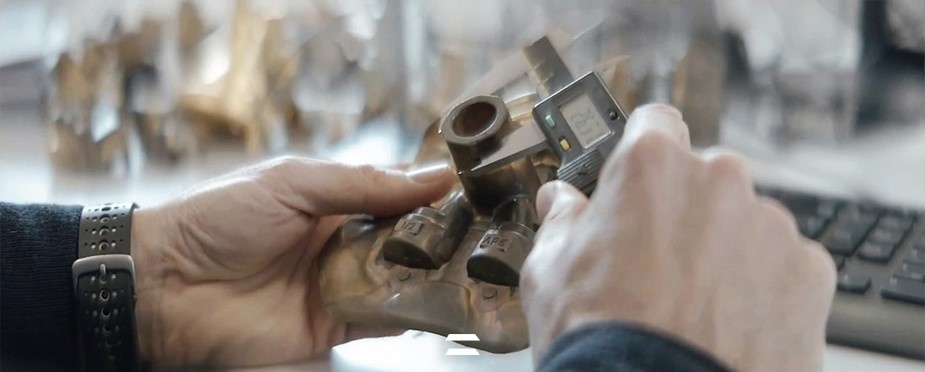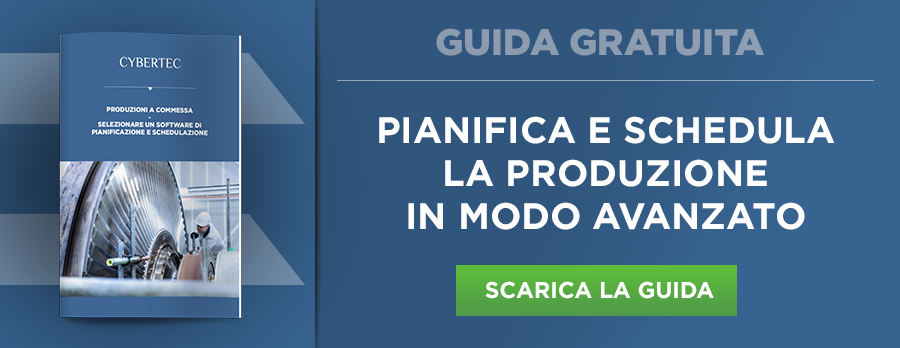The head of information services Ezio Facchini and the plant manager Stefano Patelli talk about the implementation of CyberPlan and the Brawo innovation project. In a short time, the company has equipped itself with cutting-edge tools such as Advanced Planning and Scheduling Software CyberPlan, consolidating its position as a world reference in the supply of raw and machined parts in brass, copper and aluminium.
Planning before APS
Production planning, before the use of advanced tools, was carried out with an MRP that could only be launched in certain time slots and was quite cumbersome and sometimes did not produce the desired results. In addition to this, to make the corrections suggested by the MRP and to obtain a production plan, it was necessary to wait for the next day. The scheduling, on the other hand, was carried out manually by the planner who, having available the hours available for each work centre, deducted the hours of commitment for each work order based on the requests made by the customer. In short, there was the traditional board with the cards containing the work orders, which were inserted and moved to the various machines based on the duration of the work and evaluations of durations, problems, etc. Everything was based on experience and on data that were manually entered into the management system; the same data were generally a few days behind the current situation, which meant that we worked on old data and information. “For this reason, from the moment you chose to take a finite-capacity planning and scheduling software, you also decided to equip yourself with a data collection that can support this software adequately. It is useless to have a software that releases an MRP to me in ten seconds, if I then give it the data from two days before“, says Eng. Patelli.

The production of Brawo: forging and metalworking
Brawo receives the material (brass, aluminium or copper) and processes it according to the customer’s design within the two plants in Pian Camuno (BS).
Inside the first plant, all the phases relating to the raw product are carried out, that is, hot molded and not yet worked on the machine tools. Production begins with the material, which arrives in the form of bars, and is transformed into billets in the cutting department; the billets are then heated in the ovens of the hot moulding department. Each hot billet is brought into the mold by an automatic arm and then undergoes the action of a mechanical press among the 24 currently present in the plant. The piece made can be with slime or without slime, in the first case to obtain the finished piece it is also necessary to carry out the shearing operation, which separates the slime from the actual piece. After shearing, the pieces continue for the surface finishing part: sandblasting, stainless steel sandblasting, brass plating, pickling, surface treatments that we do externally such as polishing, silver plating, nickel plating, chrome plating, etc. Finally, there is the final testing of the raw product, which can be sold in this way or continue with the processing.
In the latter case, the raw product is sent to the second plant, which is 500 meters away from the first, to become a real finished piece thanks to mechanical machining. These are machinings to transfer machines, that is, multi-station machines, in which each station has n units and n tools mounted, which go to attack the piece to perform any type of machining: holes, threads, milling and so on. This machining department consists of 22 machining centres.
Choosing the best APS
At the time of the change, Brawo was looking for an ERP (management) software that also integrated the planning processes. However, the company had noticed that the modules for production scheduling, offered in conjunction with the management system itself, were slow and laborious with respect to their needs. The employees therefore began to look for advanced production planning and scheduling software that was advanced, efficient and flexible. CyberPlan was the winner of the software selection, thanks to its specific qualities and capabilities, and also thanks to a dedicated Cybertec software interface that was combined with the ERP installed at the same time, namely JD Edwards. In order to support the APS with adequate information, the project related to the collection of data from the field in real time also started in parallel, which then went to feed the management system.

Production scheduling in Brawo
In Brawo, all departments are managed through CyberPlan, including the job account, and the hot moulding and mechanical machining departments are managed at full capacity. This means that various aspects, such as machine efficiencies, are taken into account in order to maximize the accuracy and correspondence of the plans to reality.
Often customers ask Brawo to anticipate the delivery date or add requests, within already established plans. CyberPlan’s simulation capabilities allow Brawo to analyze these situations and solve them in advance by increasing or decreasing work shifts rather than using alternative machines, and so on.
In addition, thanks to CyberPlan, production plans are “frozen“, that is, a situation is determined by the user that can no longer be modified by the system, and this is to protect all those services that are a corollary of the production department.
As for the work account, this phase of processing carried out by subcontractors is considered by the processing cycles, allowing you to know where the material is located. A capacity analysis of the subcontractor then allows to predict what the future scenarios will be and therefore to see if the subcontractor will be able to carry out the operations or if it will be necessary to increase the shifts or resources available in the future.
The production scheduling software is then also used by the sales department, which thus has visibility of the expected date of deposit of the finished product in stock, which allows it to communicate directly with the customer about the fulfillment of the order.
The sales department uses CyberPlan MF (Manufacturing Forecasting) to receive customer forecasts and process orders to be included in the production plan.
The results of installing an APS
Thanks to this important innovation project, Brawo has greatly improved production management. Regarding production planning specifically, Brawo has seen an increase in productivity, an increase in the level of service thanks to the respect of delivery times: “We have greatly improved the respect of delivery times, and our ability to quickly and reliably provide delivery dates,” says Eng. Patelli. In addition to this, the Piancamuno company benefited from an optimization of set-up times, the reduction of work in progress and lead time.
Brawo’s favorite CyberPlan aspects?
“The speed, the possibility of simulating the production plans before making them effective and the accuracy in the data,” Patelli replies, and Facchini adds: “Surely the flexibility of the interface and the possibility of managing it independently; it is certainly important to have full control of the data transfer.”

Brawo, leader in metal forging and processing
Brawo, now part of Holding Umberto Gnutti S.p.A, is a world reference in the supply of raw and processed parts in brass, copper and aluminium.
The production of raw and processed metal products starts from the brass bars, then transformed into billets which in turn are heated and melted in special moulds, after pressing the products come out in the so-called “raw” version, which is usually processed and finished until it becomes the finished product.
What you want to know about APS
Cybertec’s APS solution has enabled Brawo to achieve the many important benefits we have just seen. Find out more details and information in the free guide we have prepared for you, by clicking here.

